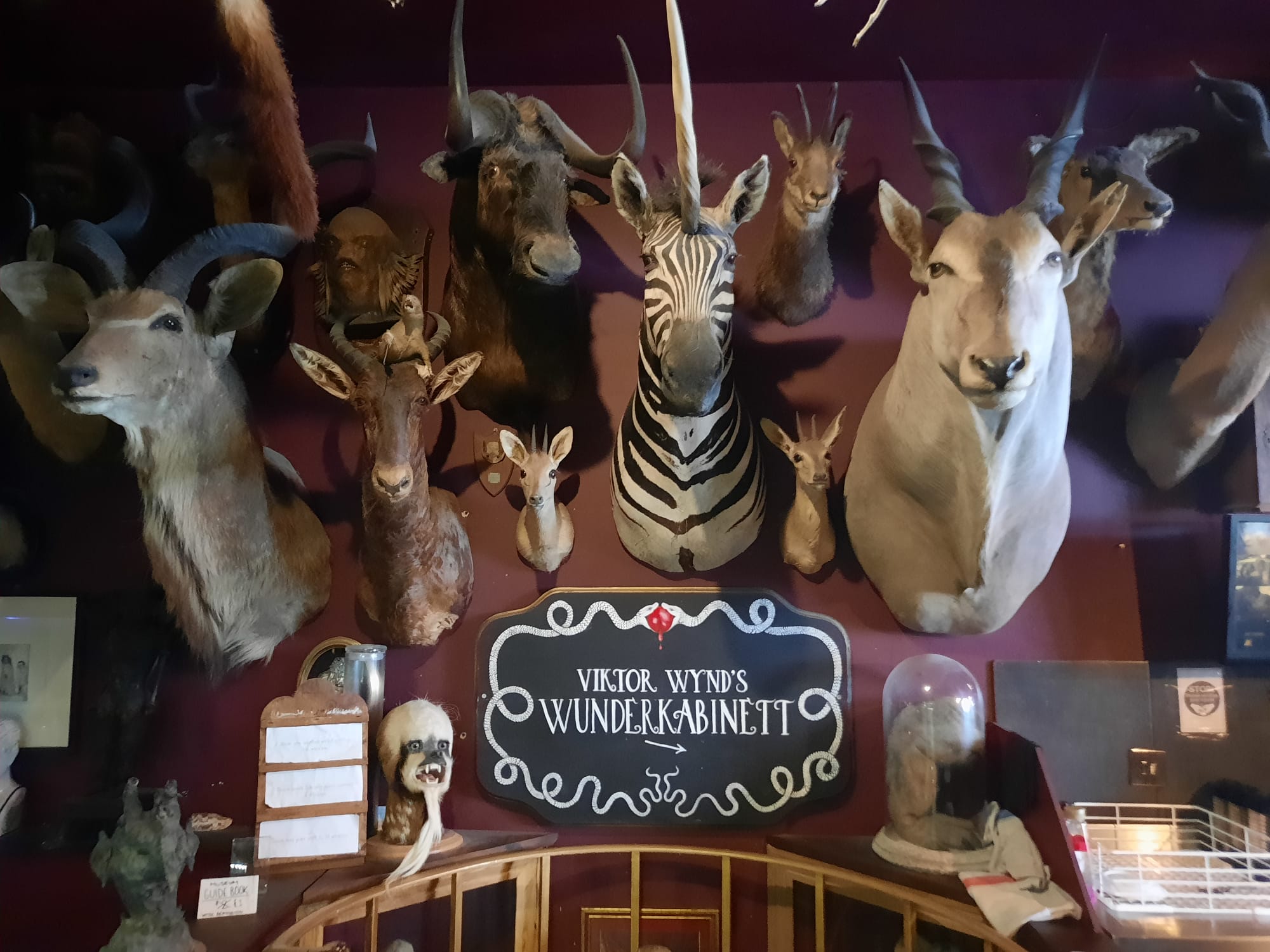A Modern Wunderkabinett: The Viktor Wynd Museum Of Curiosities, Fine Art & Natural History
This eclectic private collection hearkens back to the origins of museums. Yet the Viktor Wynd Museum of Curiosities is not for the faint-hearted.
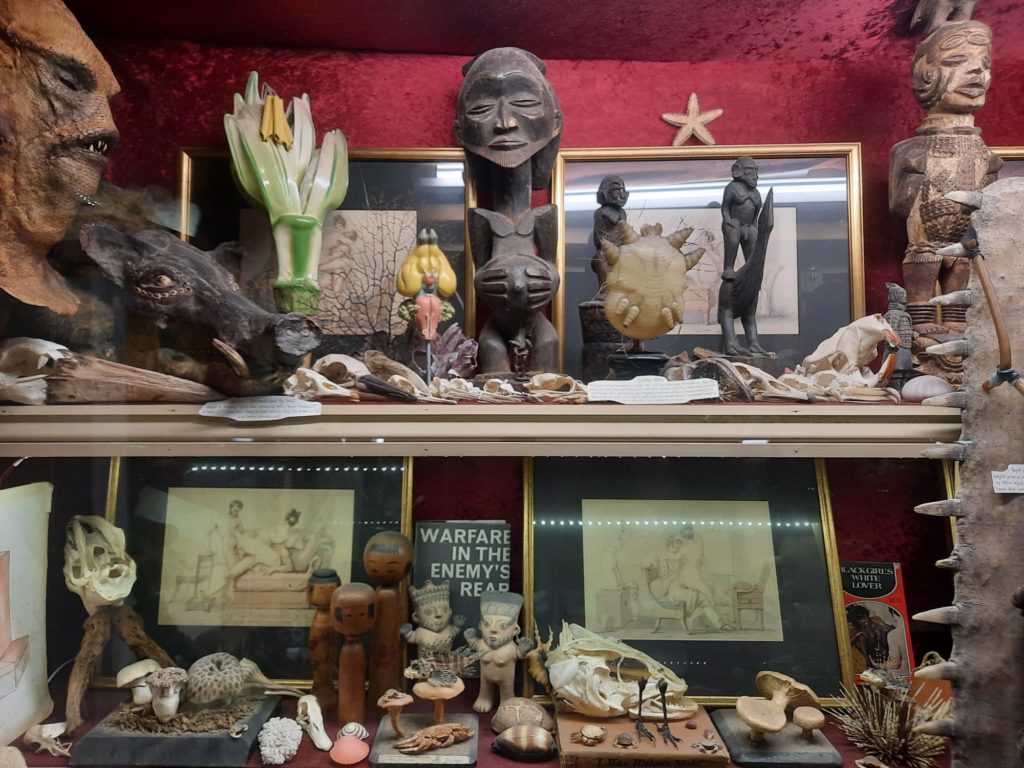
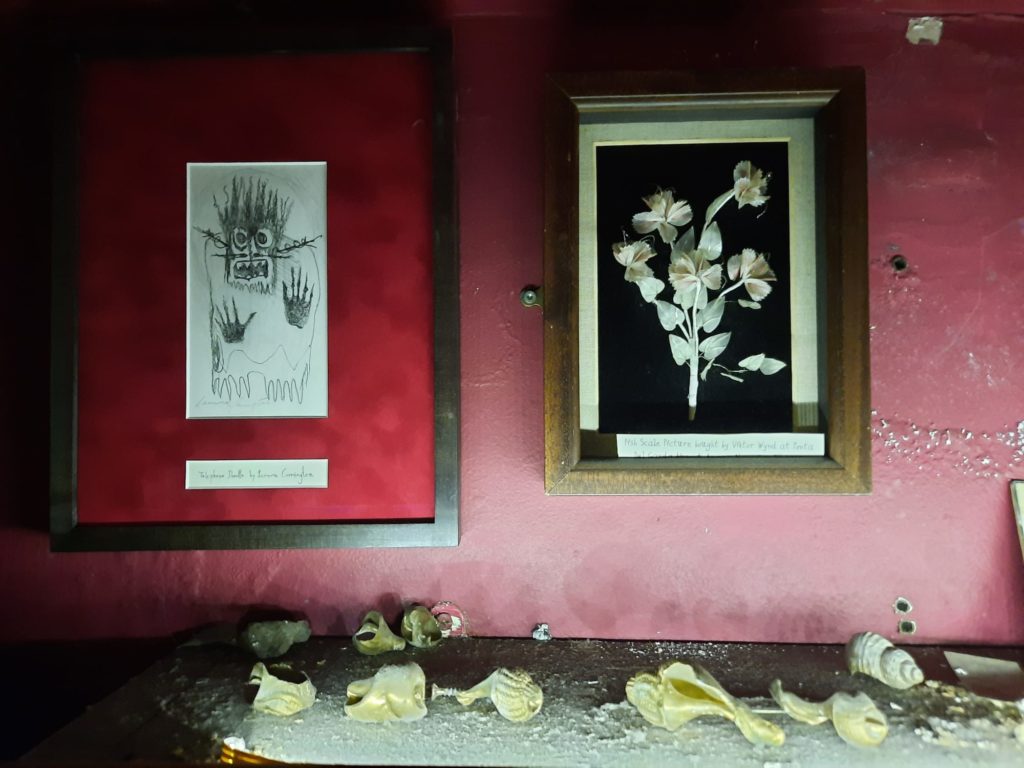
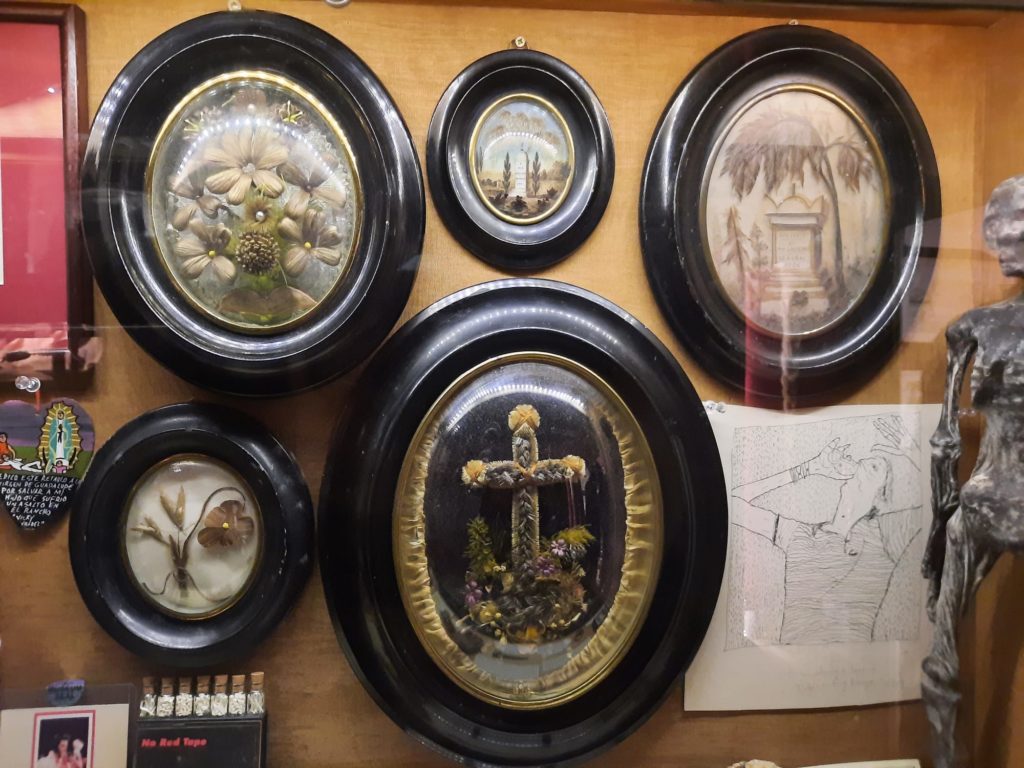
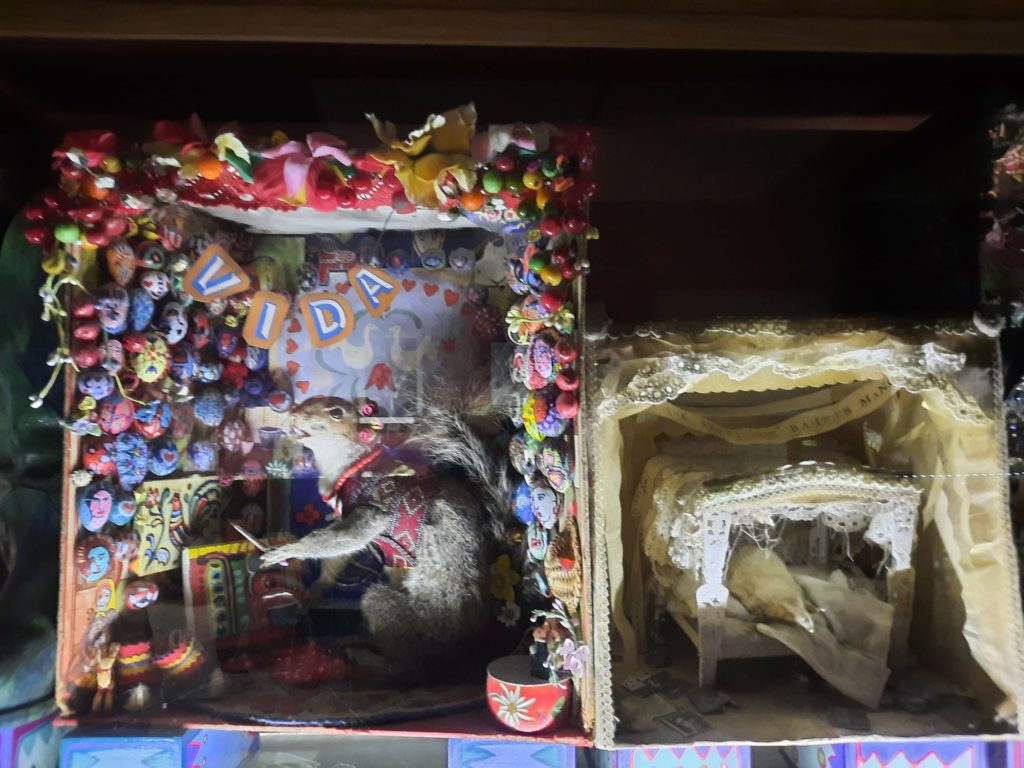
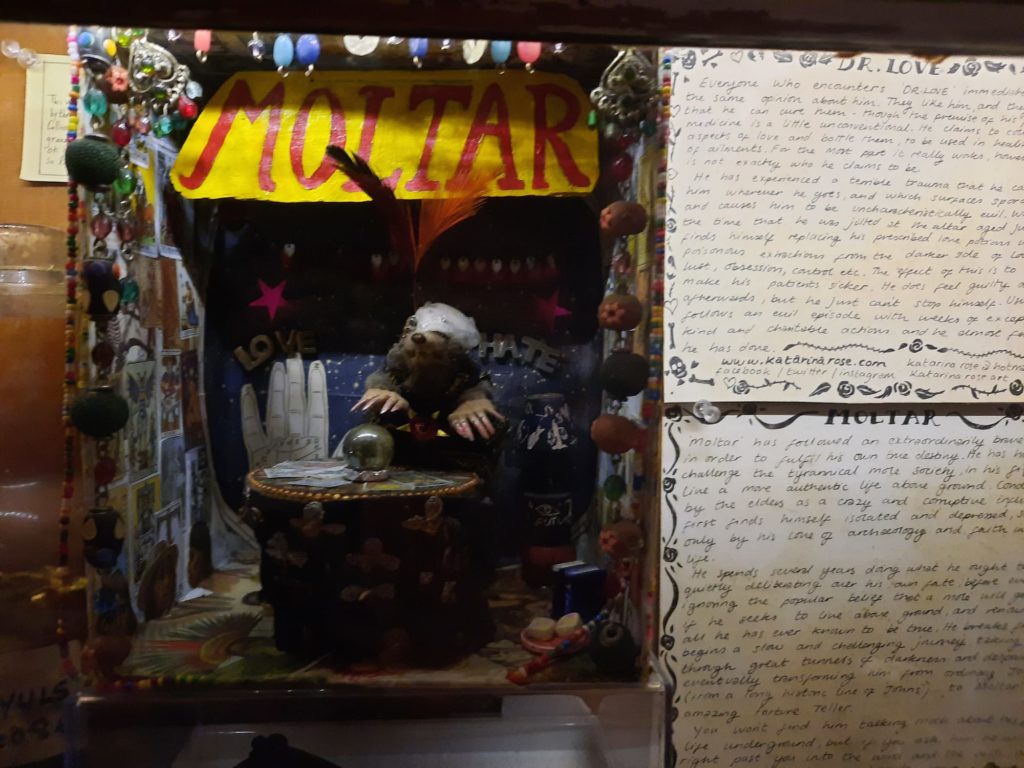
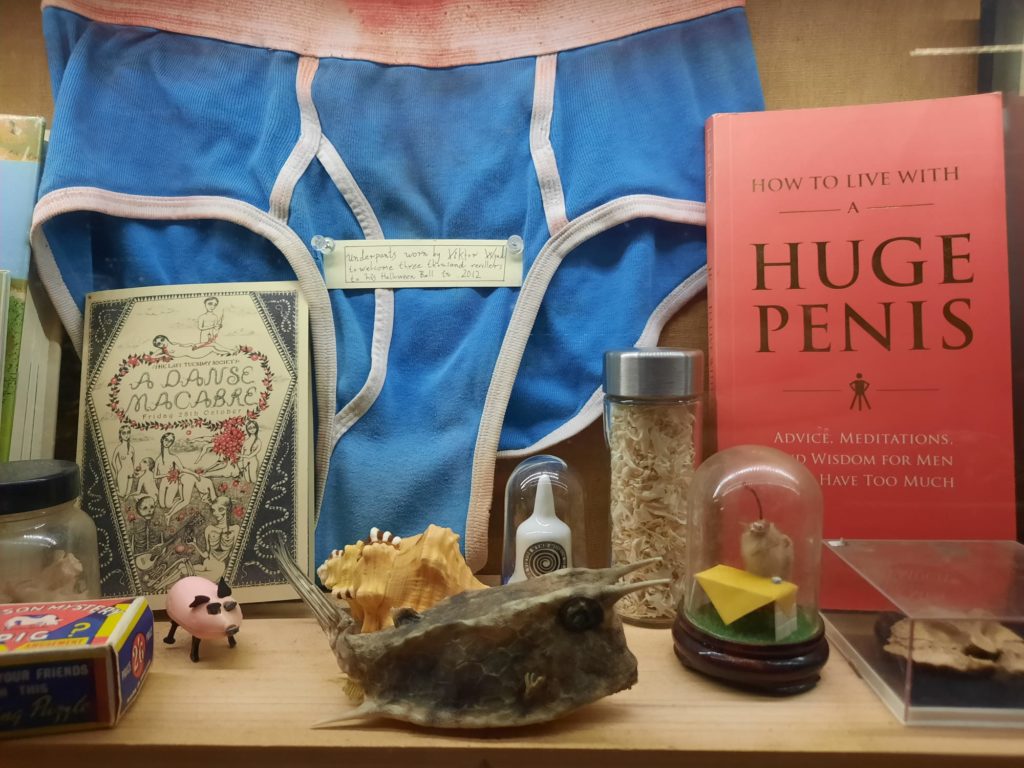
The Viktor Wynd Museum Of Curiosities
I have been looking forward for some time to visiting the Viktor Wynd Museum of Curiosities, Fine Art and Natural History. At least since I did this walk along the Regent’s Canal, which takes you past the museum in Hackney. An invitation to an event happening nearby (some time ago now, forgive me) was the perfect excuse to arrive a little early and visit. On paper, this is right up my street: an eclectic cabinet of curiosities with an interesting back story. In practice, my response to it was layered. Hence why today’s post is not a review but more of a consideration of why I responded in the way that I did.
The Viktor Wynd Museum of Curiosities, Fine Art and Natural History is in essence just that. A collection of art and objects brought together by one Viktor Wynd. Wynd has more strings to his bow than this museum, however. The museum is housed in the basement of his bar (or rather Absinthe Parlour), The Last Tuesday Society. The last Tuesday Society also runs an admirable range of online and in person events. You can learn about or participate in things like scrying, myths and legends, tarot, seances, tattoos and poppets. Or you can even join Wynd on a visit of cultural immersion and collecting to somewhere like Benin or Papua New Guinea via his travel agency, Gone with the Wynd.
What a character! This Guardian article gives a sense of what it might be like to meet the man in person. An experience, by the sounds of it. You wouldn’t really expect anything less: one doesn’t build a museum-worthy collection of curiosities without a certain level of eccentricity. We will come back to this, though. Wynd’s force of personality is so much a part of the museum (and absinthe parlour) experience the two cannot be unentwined. For now, though, let’s think a little about where the cabinet of curiosity concept comes from and how this modern example compares.
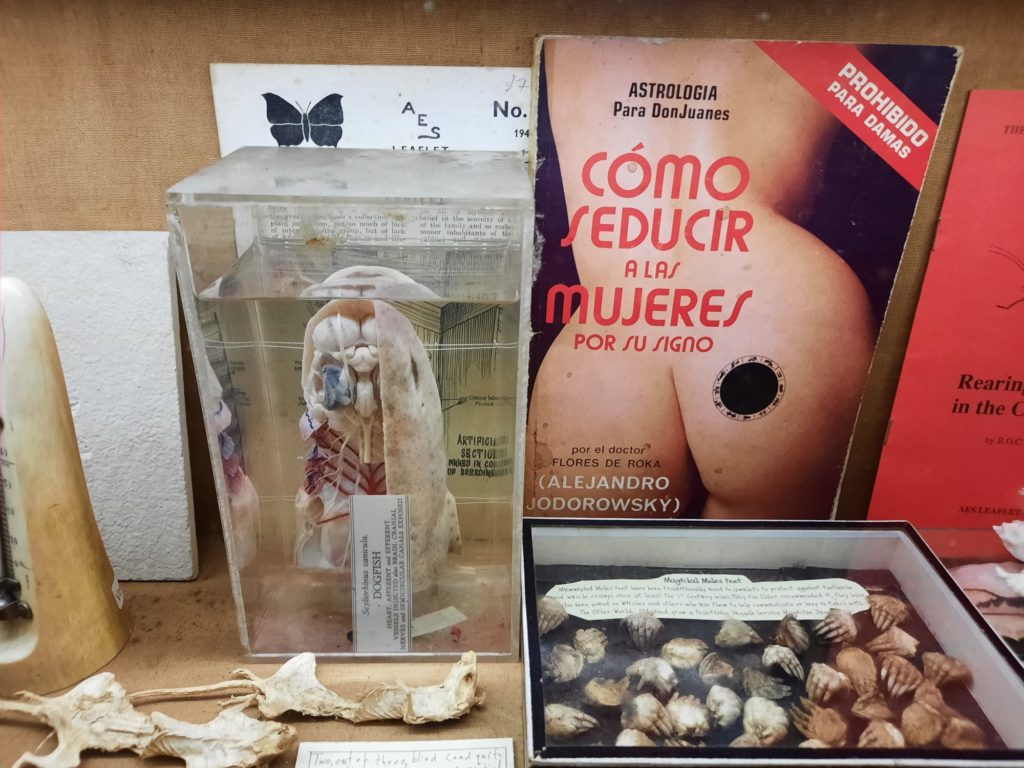
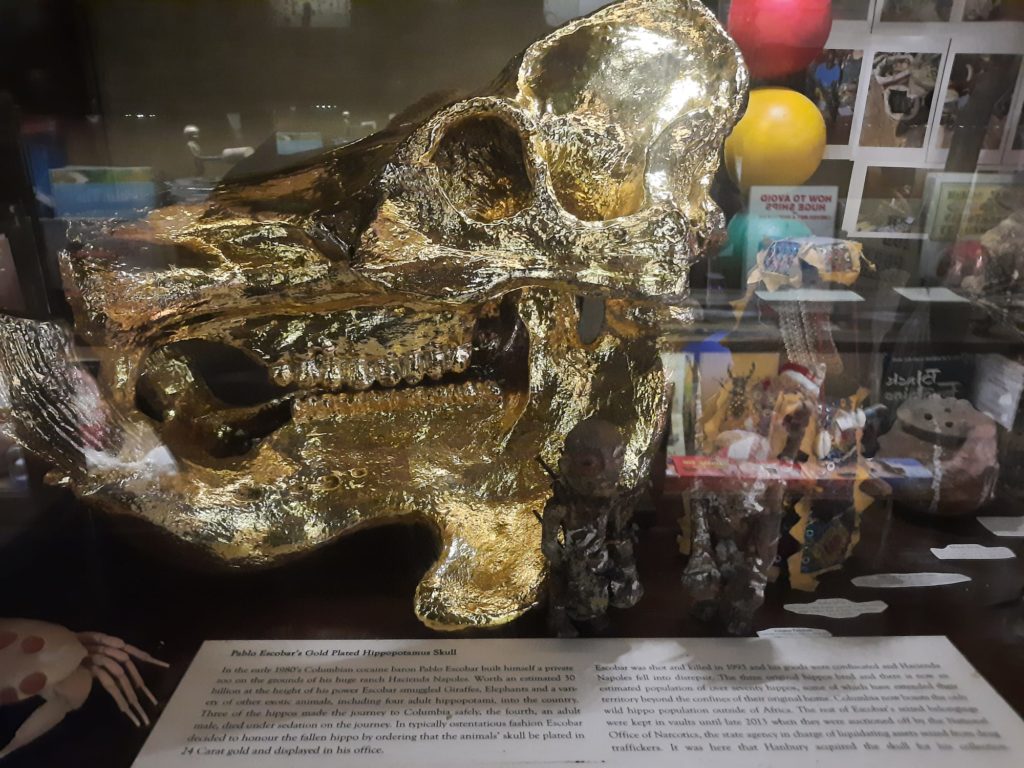
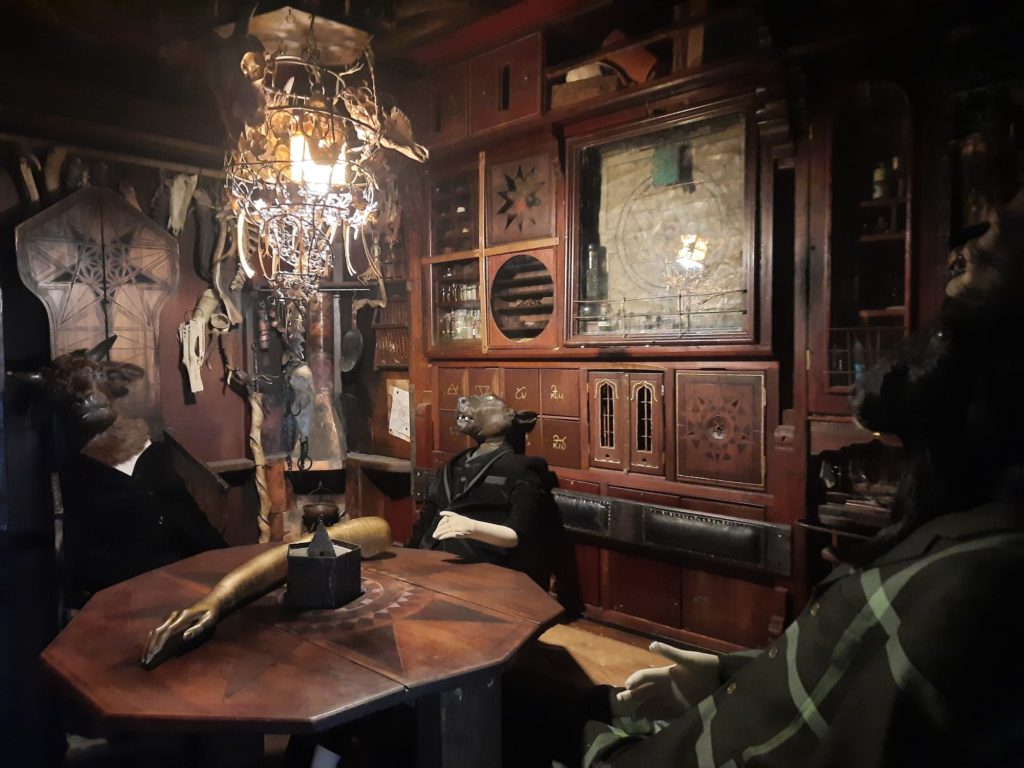
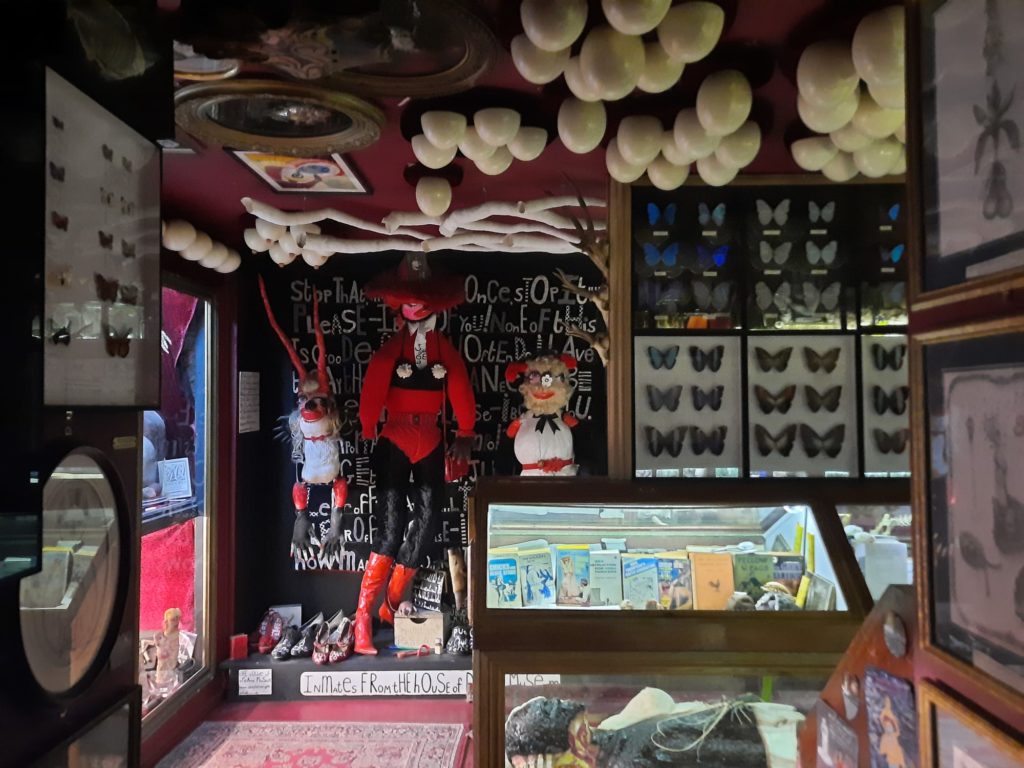
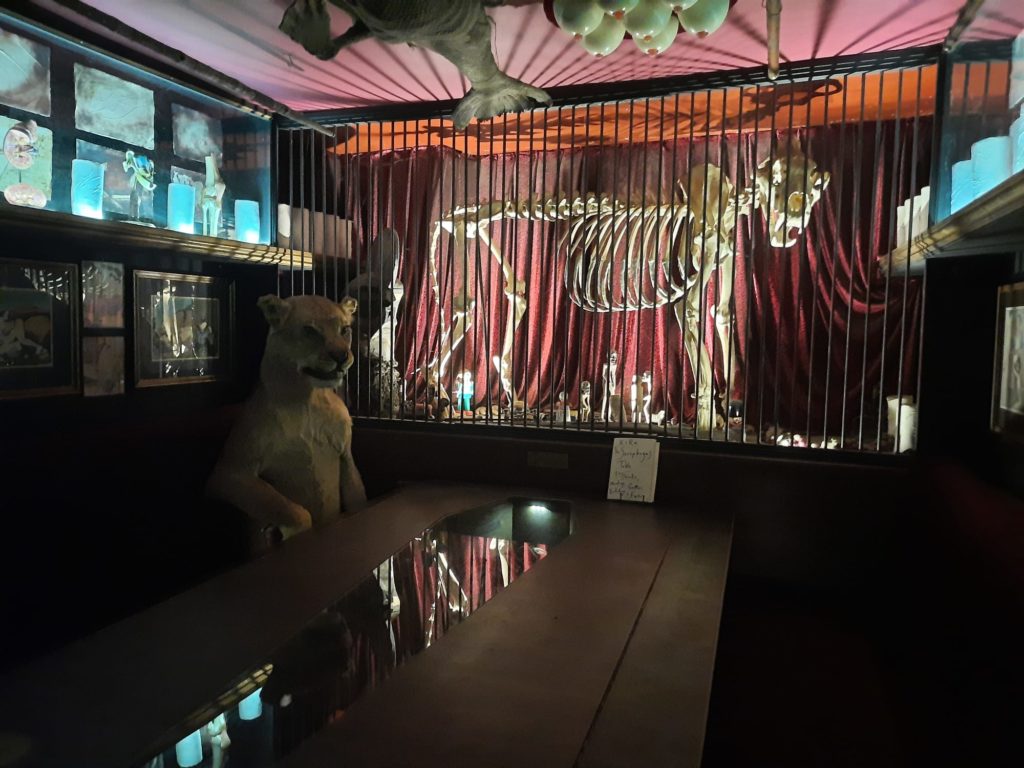
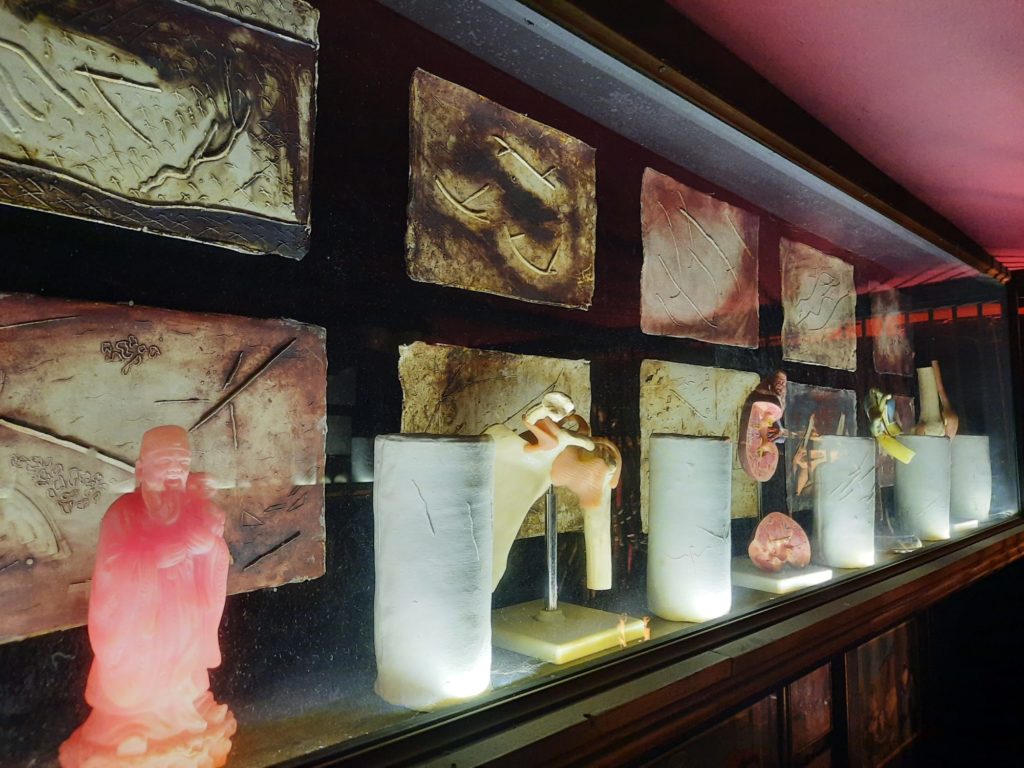
Wunderkabinett, Cabinet Of Curiosities, Kunstkammer
All of those terms above are variations on a theme, one of particular interest to me as a museologist. The Cabinet of Curiosities was a precursor to the museum. Emerging in the 16th Century, Cabinets of Curiosities were established by men of means who wished to show off their taste and learning by gathering together notable objects. The collections spanned multiple categories: natural history, archaeology, geology, ethnography, fine art and so on. They were a great indicator of social status as well as a sign of the increasing interest in exploring and categorising the world. Scientific knowledge is of course never fixed, so some objects included in Cabinets of Curiosities were what we would consider more fiction than fact. Taxidermied ‘mermaids’ for instance: that type of thing. But nonetheless they designated their owners as men of taste and an outward-looking focus.
Long-time readers have seen a few examples of Cabinets of Curiosities on the blog before. Earlier this year we saw a fine princely example, the Grünes Gewölbe (Green Vault) in Dresden. Opened to the (limited) public by Augustus the Strong, this collection is more about wonders than curiosities. Or there’s the Wernher Collection at London’s Ranger’s House. Viktor Wynd is not the only modern proprietor of a Cabinet of Curiosities, either: we visited the Dunedin Museum of Natural Mystery a while back. This is the work of artist Bruce Mahalski who, like Wynd, has been collecting and curious from a young age.
When Wynd proclaims his museum as a Wunderkabinett, therefore, he is establishing himself as part of a rich history. He is also setting certain expectations about what his collection will be and not be. Perhaps this last point is behind my slight discomfort. It’s potentially a place to leave all pre-conceived ideas at the door and immerse yourself in Wynd’s world.
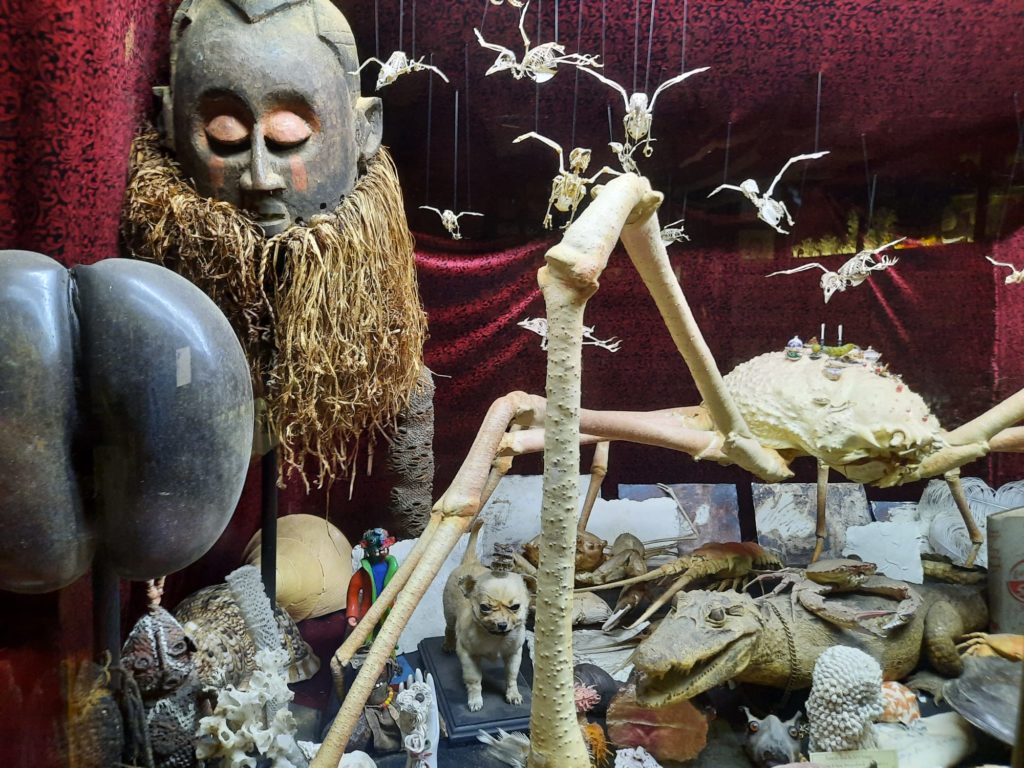
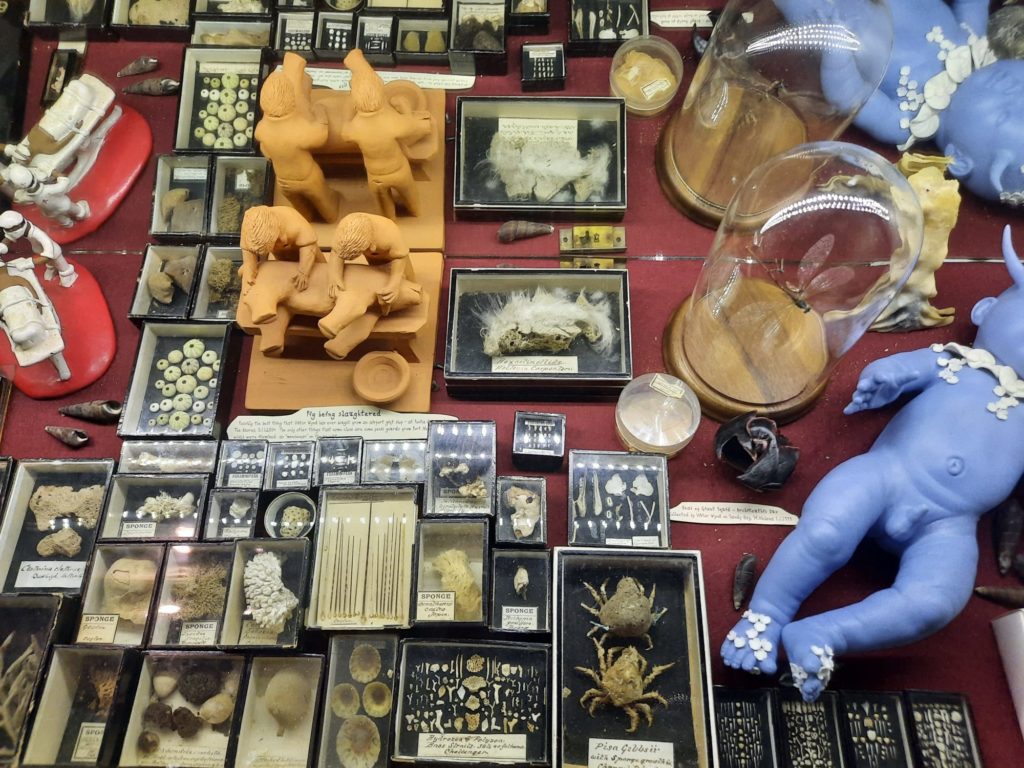
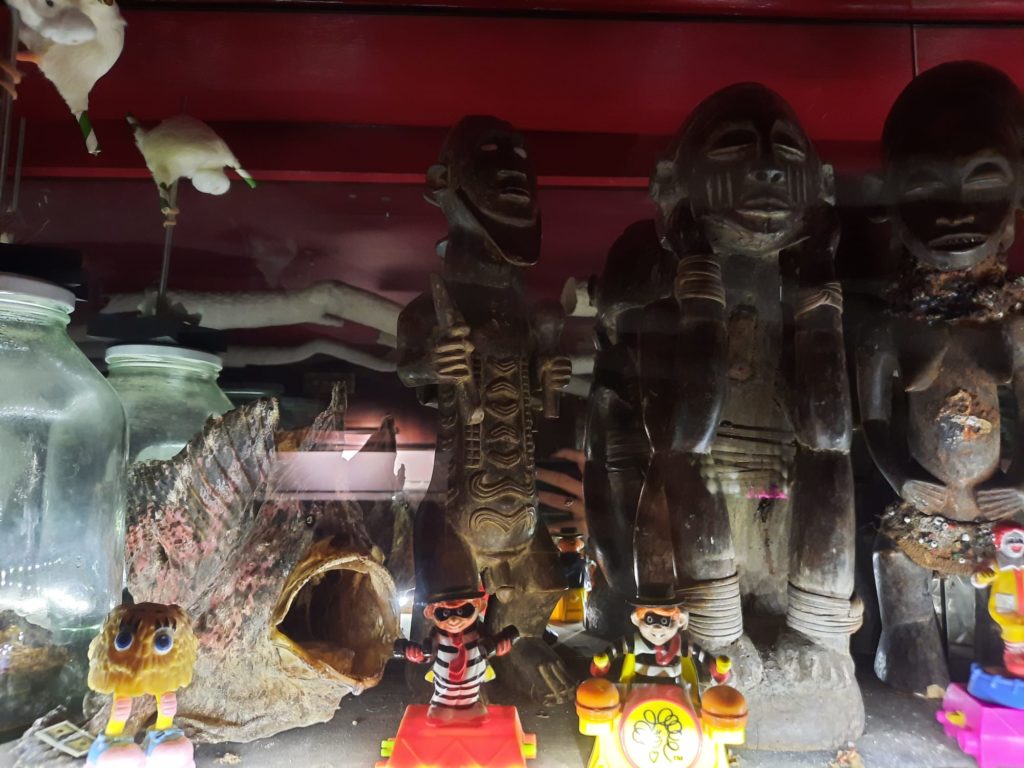
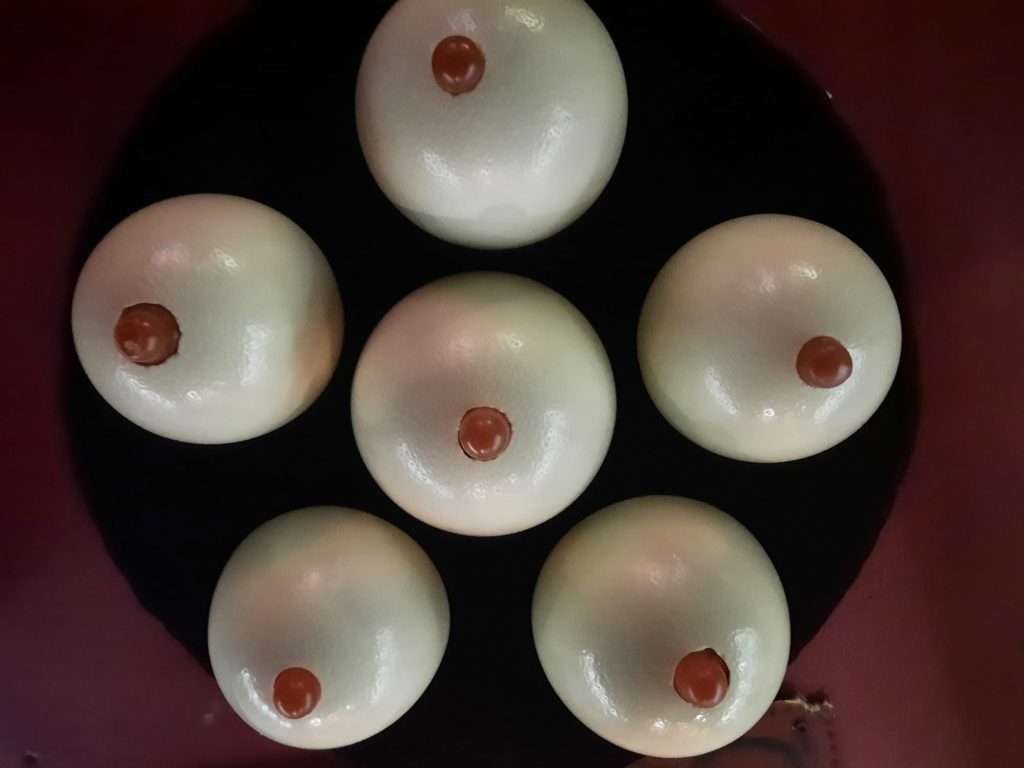
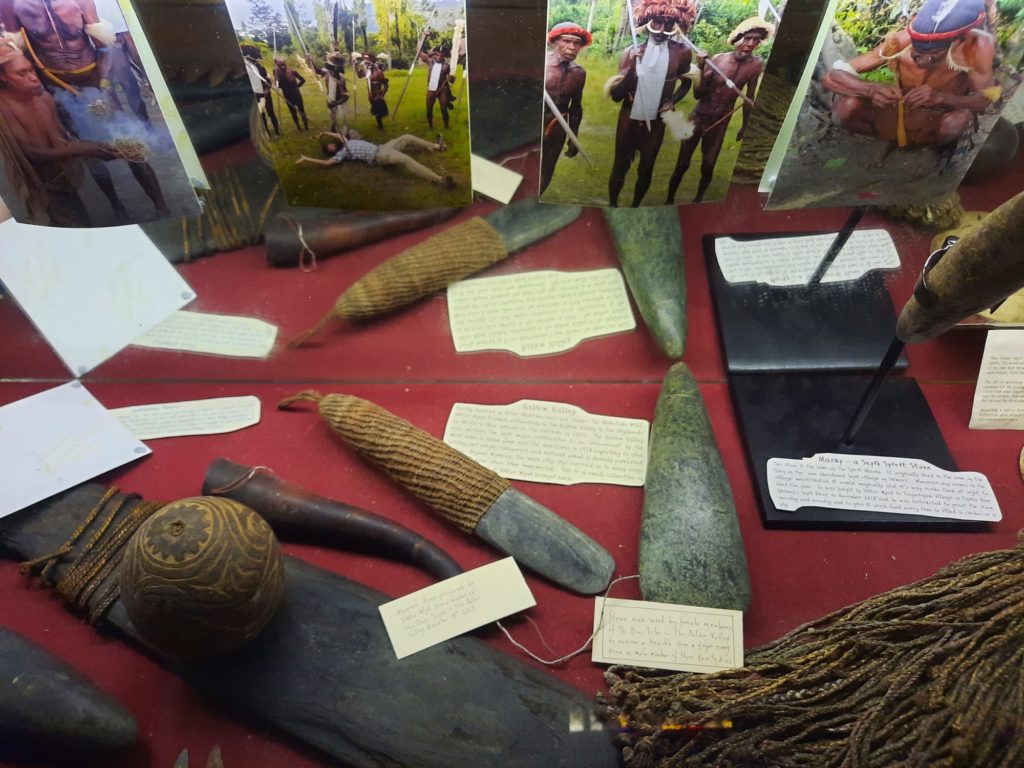
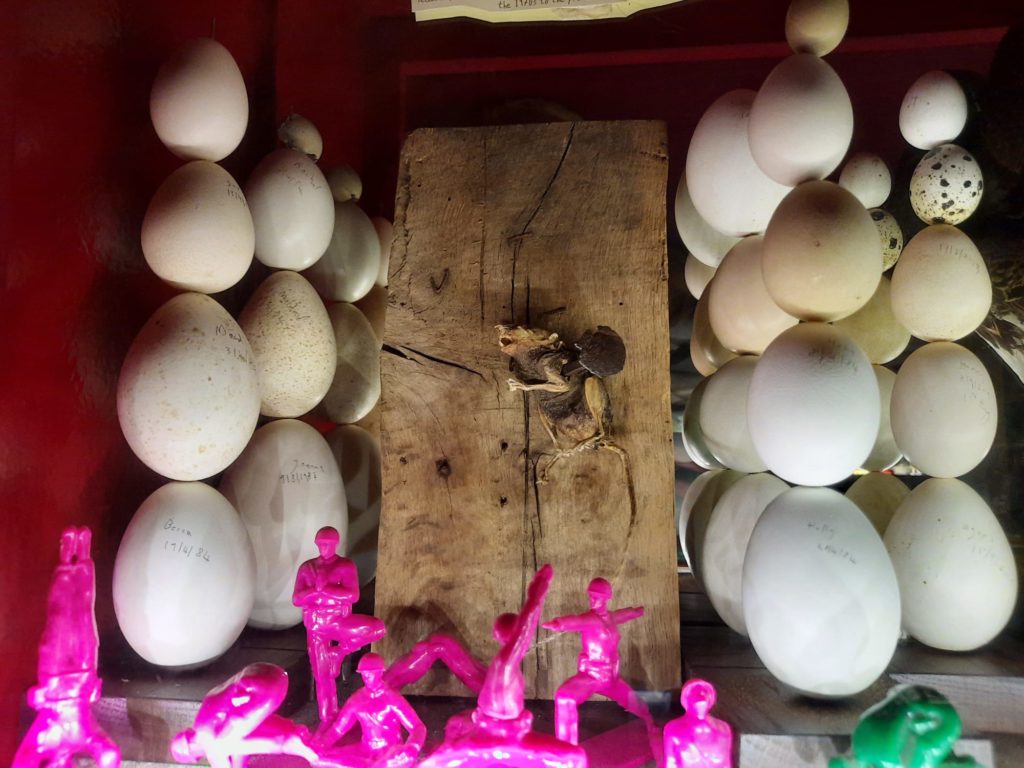
A Museum Of Curiosities, Fine Art And Natural History
What about the Viktor Wynd Museum of Curiosities, Fine Art and Natural History jarred with my preconceived ideas, then? A lot of the typical categories are here. There are plenty of natural history specimens, and ethnographic objects. There’s fine art, but also a lot of ‘found object’ kind of exhibits that are interesting because of the juxtapositions created. Imagine McDonalds toys next to African sculptures. Often book titles are used to subvert or enhance the meaning of an object on view. So it ticks the boxes of a group of notable objects, crossing categories, and showing the discernment and taste of its owner.
When I think about what I didn’t gel with, there are a couple of things that come to mind. Firstly, it’s a very sexualised and somewhat scatological space. Many roads lead back to sex or toilet habits. Even seemingly unsexual objects sometimes have a plaque bringing sex back into the viewer’s mind in some way. Several jars purport to contain the urine or excrement of celebrities. I know I sound like a prude (and maybe I am). But it was so pervasive I felt in the end almost like someone’s fetish had been foisted upon me without my consent. It’s a very curated show of unconventionality but an angle within the collection that for me felt a little overwhelming.
Secondly, Wynd takes a very particular approach to meaning-making within the museum. By this I mean that the truth does not get in the way of a good story. Some labels within the museum are either so outlandish as to be improbable, or admit to bending the truth. The trouble is, once you know some things to be untrue, how do you distinguish truth from fiction? It’s interesting in the context of a Wunderkammer/Cabinet of Curiosities, where Wynd’s forebears were proudly displaying half monkey/half fish taxidermy as mermaids, or believed ammonites were snakes turned to stone. What is positioned as truth isn’t always such. But nonetheless I felt this museum to be more of a holistic art installation in the end.
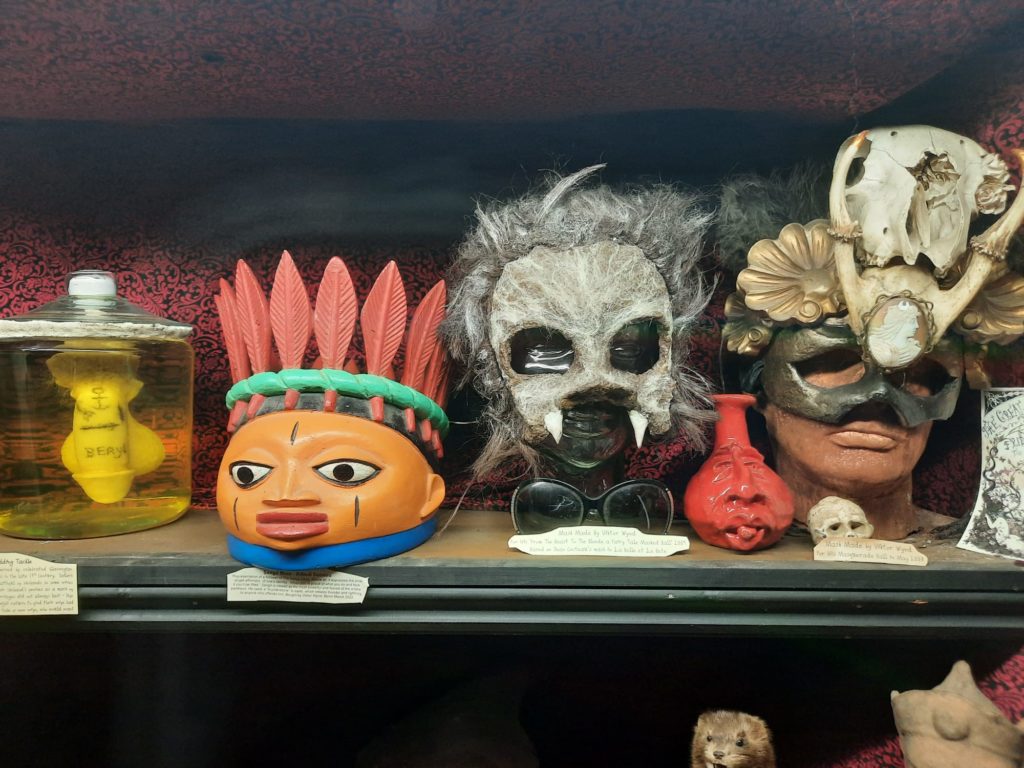
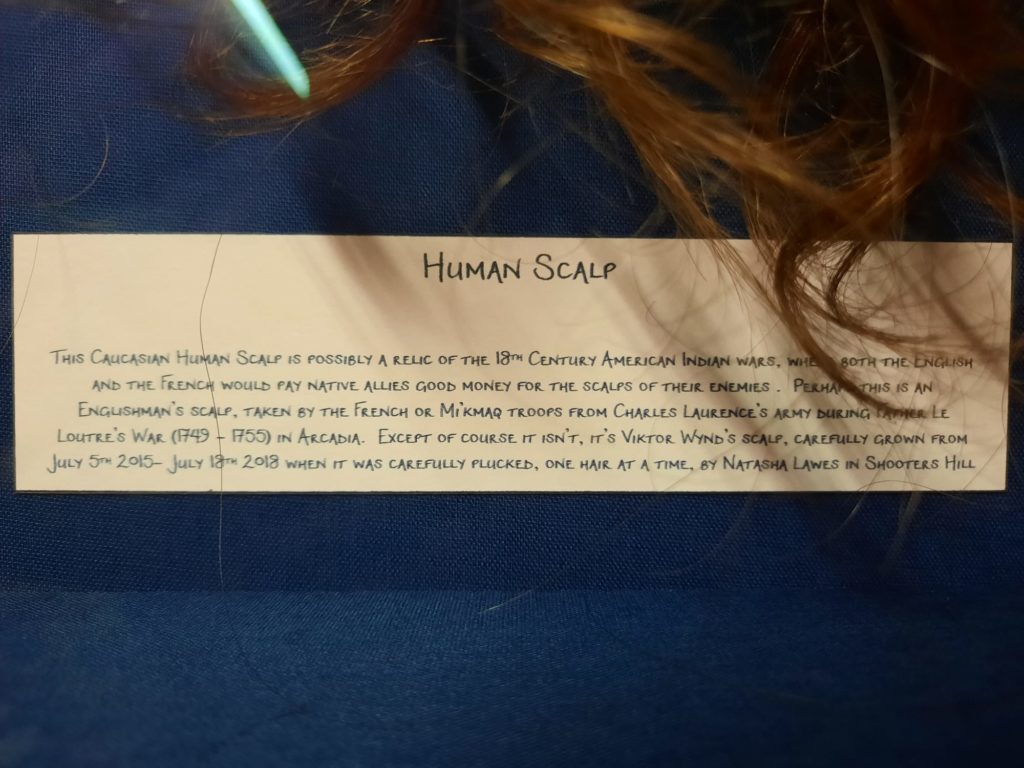
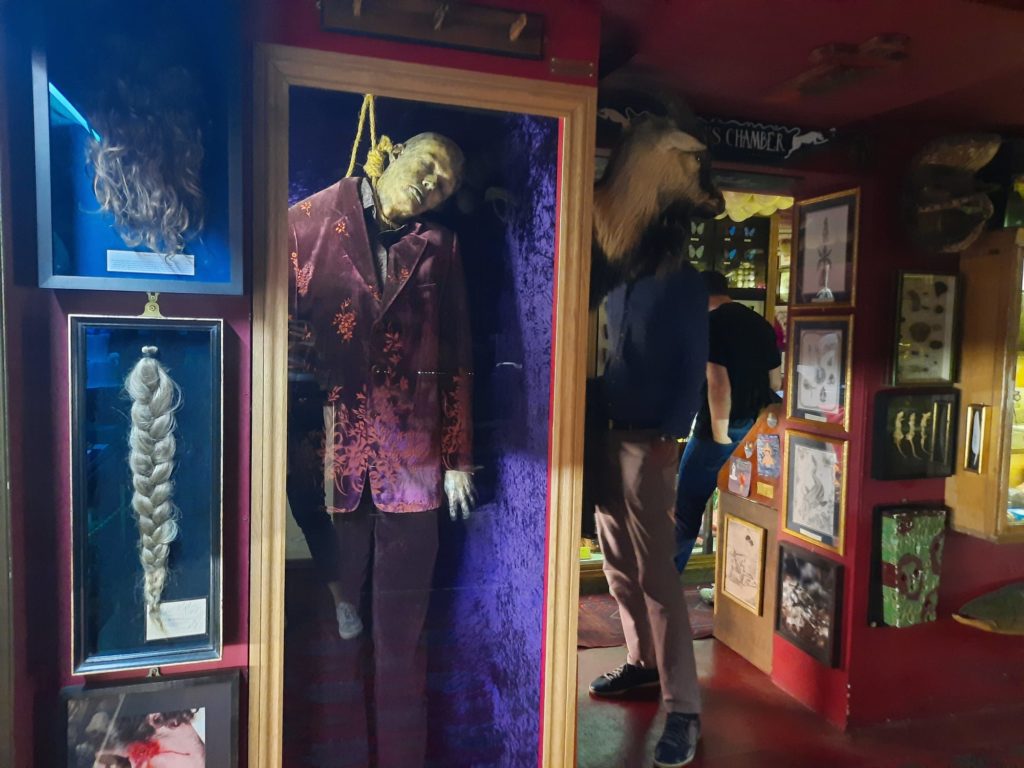
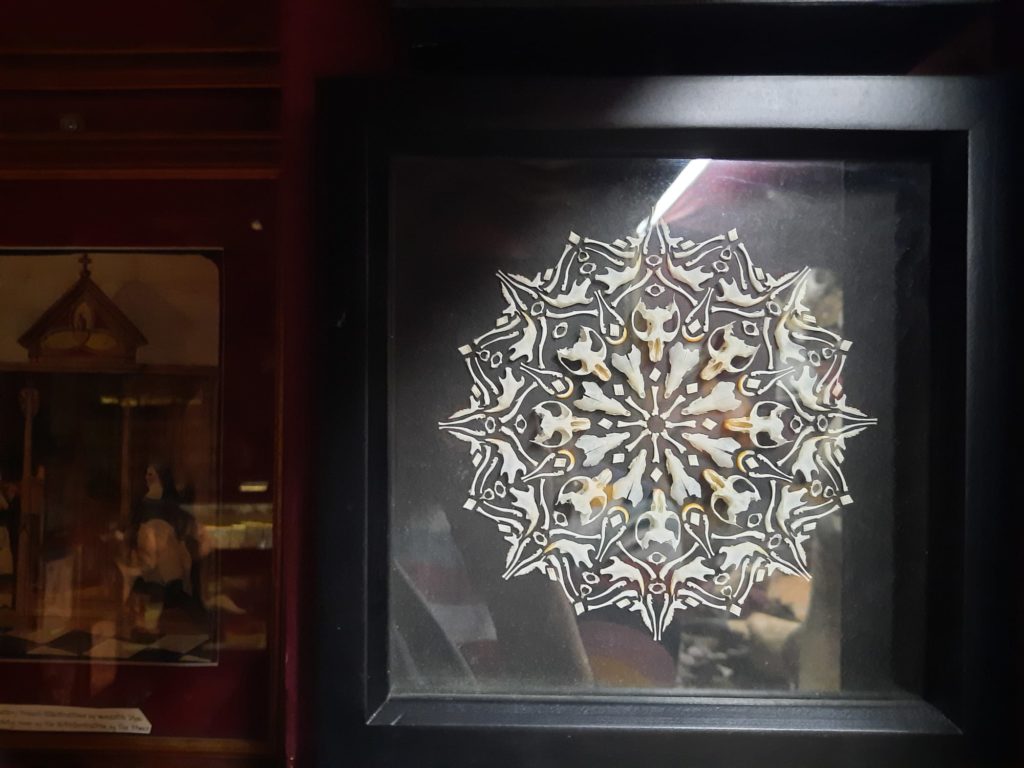
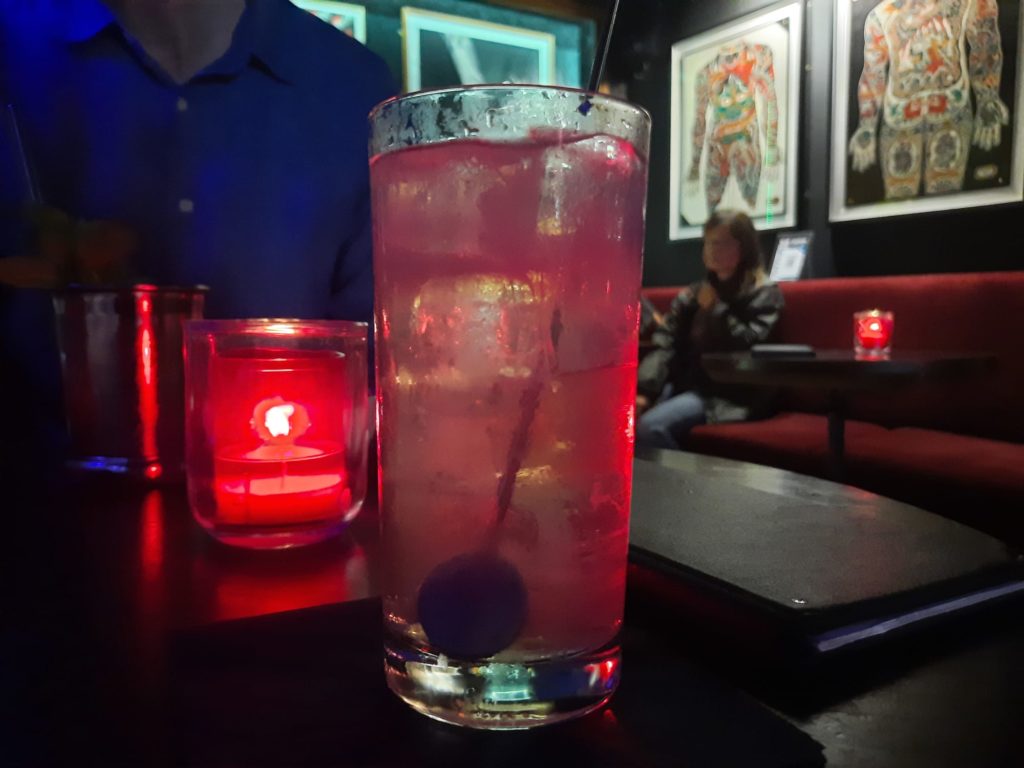
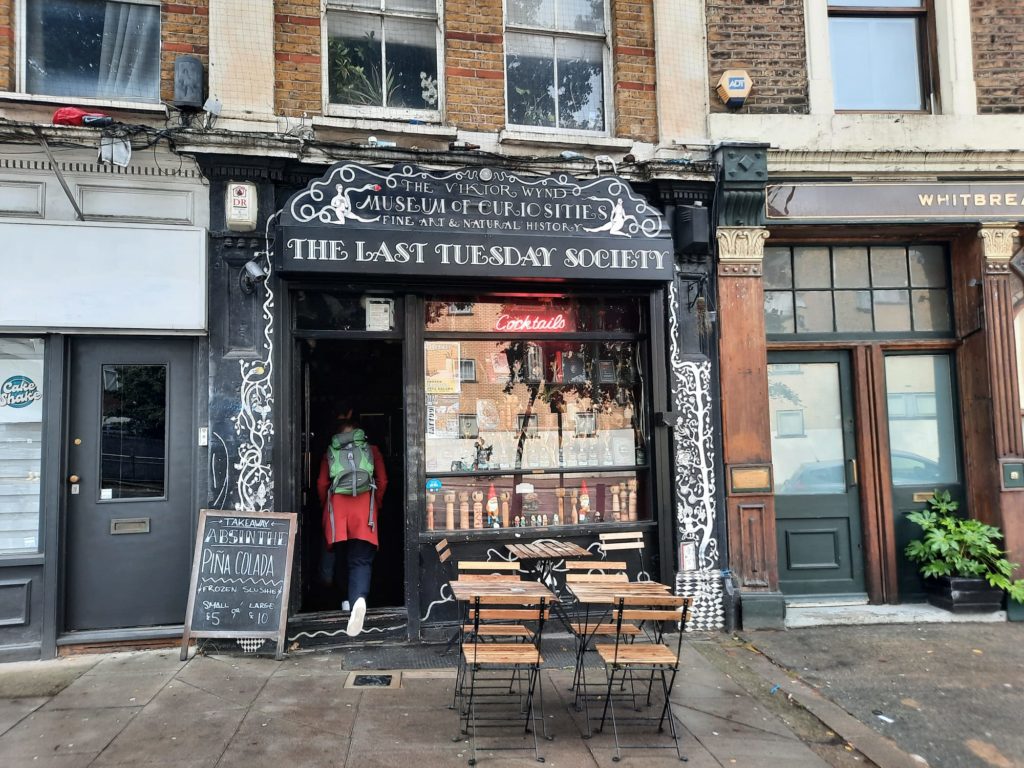
Final Thoughts On The Viktor Wynd Museum Of Curiosities
Don’t let my ruminations on the Viktor Wynd Museum of Curiosities, Fine Art and Natural History prevent you from visiting. It’s a very convenient detour from the Regent’s Canal in Hackney. And I can definitely recommend stopping for a drink before or after. Best to pre-book but we were lucky with the time we arrived. I enjoyed an absinthe and kumquat concoction and admired the taxidermied animals and curios within the bar.
But I think that’s the differentiation for me. If you are looking for a curious London spot that’s unlike anywhere you’ve seen before, perfect! The Last Tuesday Society and a quick stop in the museum fit the bill. Maybe walk over to Hoxton for some Vietnamese food afterwards like we did and make a day of it. If your interest is purely museums, on the other hand, please come forewarned. This is a very personal collection displayed in a very personal way. It never purported to be otherwise (unless you’re a purist when it comes to terminology) so if I was unprepared that was my own doing.
If I feel less inclined than I once did to look through the Last Tuesday Society’s event listings, then I come back to that feeling of being part of a fetish as the root cause. The Dunedin Museum of Natural Mystery is a similarly personal place and collection but without the same jarring undertone, so perhaps it all comes down to whether you’re part of the target audience or not.
If you see this after your page is loaded completely, leafletJS files are missing.

